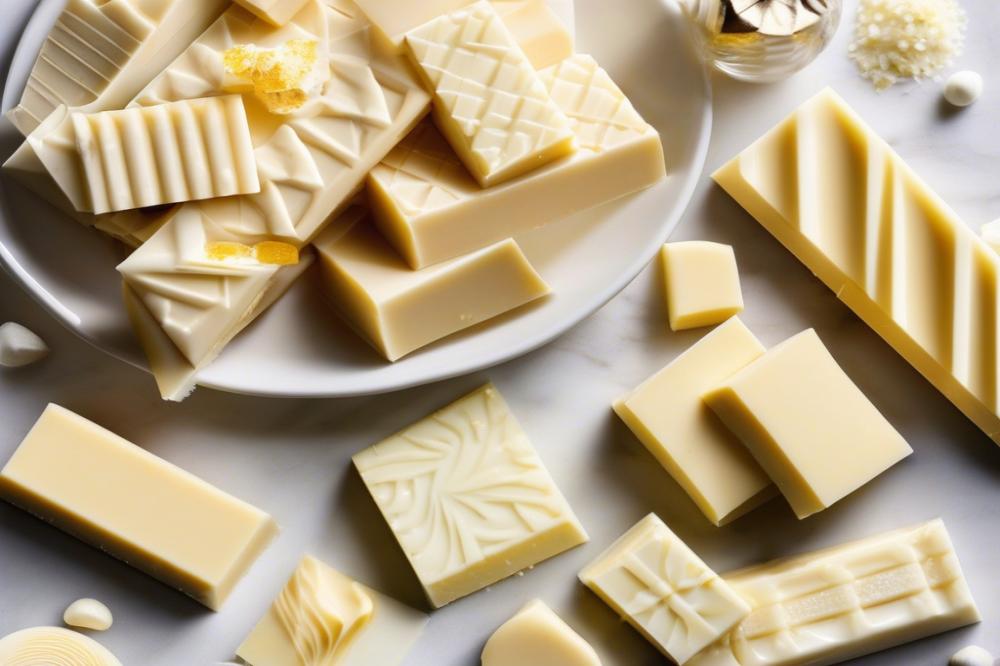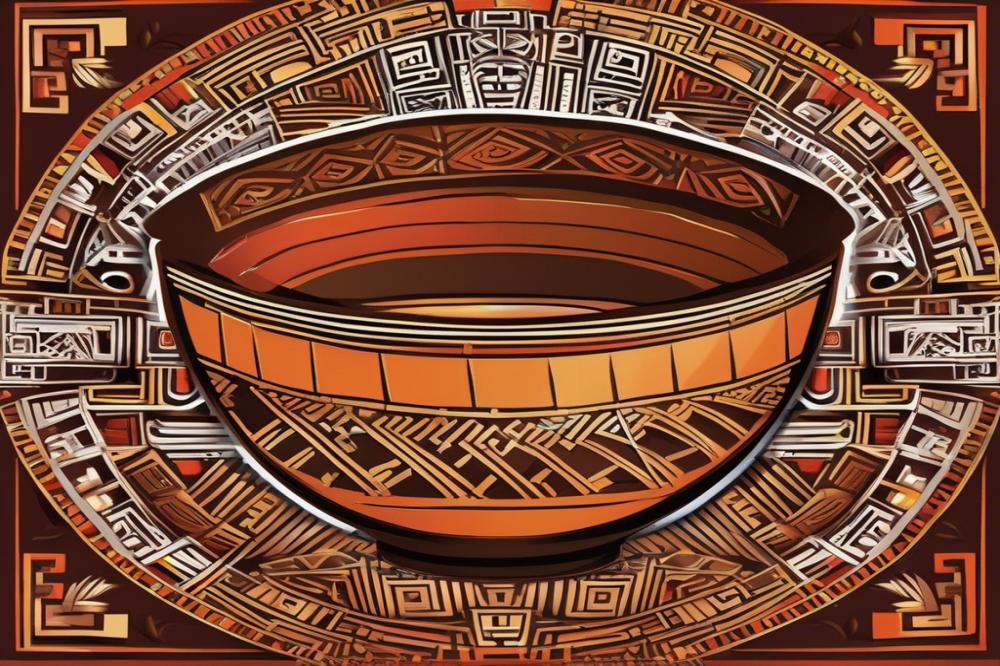Introduction
Chocolate has a rich and fascinating history that spans thousands of years. It began as a bitter drink in ancient cultures, valued for its stimulating effects. Over time, this beverage transformed into the sweet treat that many enjoy today. The evolution of chocolate has been shaped by various cultures and regions, each adding its own twist. Today, we can find a wide variety of chocolate products that cater to all tastes.
A special mention must be made of white chocolate, which stands apart from traditional cocoa products. Unlike its darker counterparts, this confectionery relies on cocoa butter, milk solids, and sugar as its main ingredients. A distinctive flavor profile arises from this combination, making it a beloved treat for those who prefer something sweeter and creamier. While some argue it doesn’t qualify as real chocolate, its creation offers a delicious alternative to classic options.
Exploring the origins of white chocolate opens the door to intriguing discussions and controversies. Questions abound regarding its status in the chocolate family and the quality of its components. The ingredient debate continues to spark conversations among chocolate enthusiasts. Understanding the production process of this treat also sheds light on its unique position in the market. Culinary uses for white chocolate range from baking to decoration, making it a versatile choice for chefs and home cooks alike.
This article aims to delve deeper into the history and ongoing controversies surrounding white chocolate. By understanding the background and significance of this confectionery, readers will gain a better insight into its role in the world of sweets.
The origins of White Chocolate
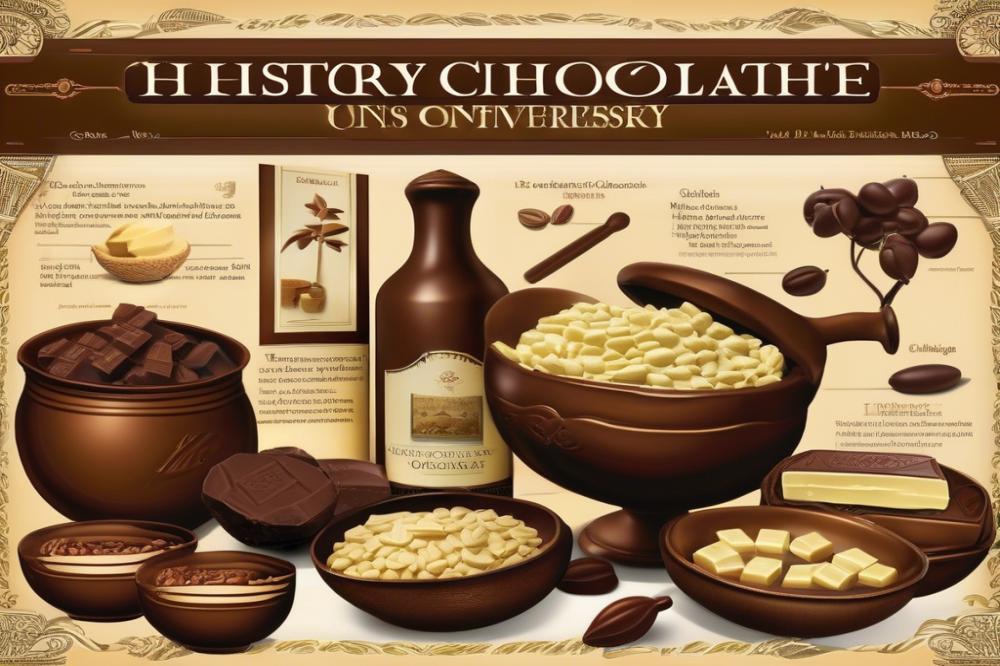
The inception of white chocolate dates back to the 1930s. This period marked a significant change in the confectionery world. Manufacturers began experimenting with cocoa butter, leading to a product that diverged from traditional chocolate. While most chocolates contain cocoa solids, white chocolate does not. Instead, it utilizes cocoa butter, milk solids, and sugar in its formulation.
Key players in the production of this sweet treat were inspired by the idea of harnessing the properties of cocoa butter. As companies sought to create a creamier, sweeter alternative, they pioneered various methods. These developments led to the emergence of a product that many consumers adore today. Nestlé and Cadbury were among the prominent names that popularized this uniquely different snack.
Utilization of ingredients like cocoa butter allows for a smooth texture and rich mouthfeel. Additionally, milk solids contribute to the creamy flavor profile that white chocolate fans enjoy. Sugar sweetens the blend, making it appealing to a broad audience. However, this combination sparked an ingredient debate within culinary circles. Some argue that without cocoa solids, this product should not be labeled as chocolate at all.
The production process requires careful attention. Manufacturers blend the ingredients in specific proportions to achieve balance. Crafting this confectionery has become an art form as brands strive to create the perfect product. From bars to chips, the versatility of white chocolate showcases its culinary uses across a variety of desserts and snacks.
As the history of white chocolate continues to evolve, controversies around its classification persist. Many enthusiasts are still passionate about its unique characteristics. Discussions about what defines chocolate linger in food communities, fueling debates at tastings and gatherings.
The Production Process of White Chocolate
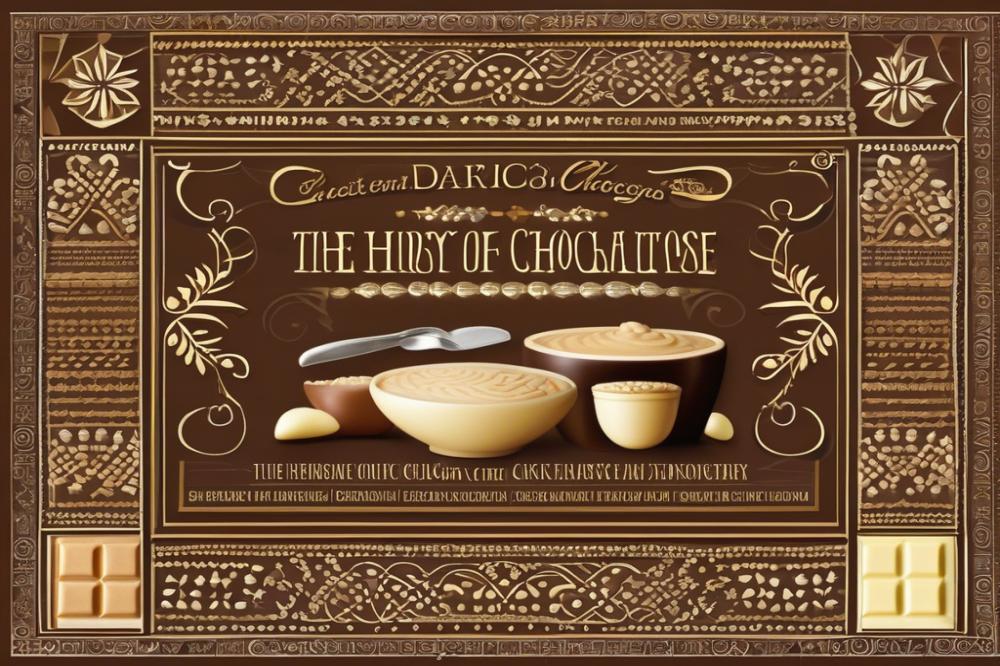
Making white chocolate involves several key steps that differ from traditional dark and milk varieties. To start, manufacturers extract cocoa butter from cocoa beans. This rich, fatty substance acts as the base for the final product. Without cocoa butter, you wouldn’t have that smooth and creamy texture that white chocolate lovers adore.
Moving through the production process, sugar is added. Sweetness is an essential element in creating the desired flavor profile. Milk solids come into play next. These solids help to enhance the creaminess and give the confectionery a more luscious mouthfeel.
Unlike dark chocolate, which contains cocoa solids, white chocolate skips this step. This omission leads to the ingredient debate. Some purists argue that this product shouldn’t even be called chocolate since it lacks cocoa solids. Others enjoy it for its sweet and creamy qualities.
Each ingredient impacts the final taste and texture significantly. Cocoa butter is the star here, bringing its own subtle flavor while allowing the sweetness to shine. Other ingredients contribute to culinary uses, making it versatile in various desserts, from mousses to cookies.
In summary, the production process of white chocolate showcases a blend of cocoa butter, sugar, and milk solids. This combination yields a delightfully creamy treat, despite ongoing controversies over its chocolaty status.
Understanding the Flavor Profile of White Chocolate
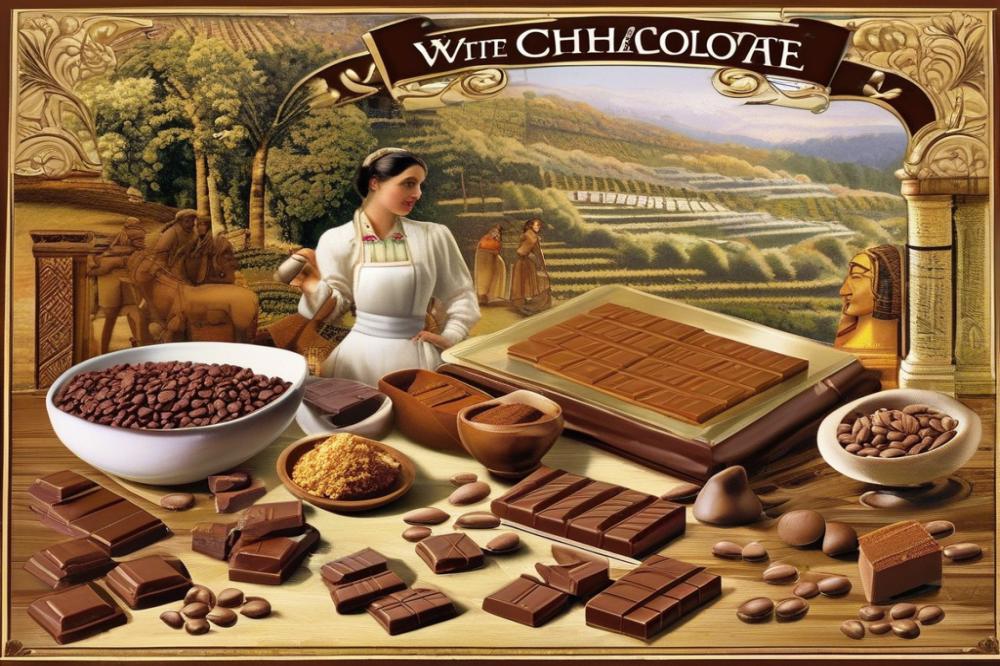
White chocolate delivers a sweet and creamy taste that enchants many palates. It mainly consists of cocoa butter, sugar, and milk solids. Each ingredient plays a role in creating its smooth texture and rich flavor. While some consider it a chocolate, others question its classification due to the absence of cocoa solids. This omission sparks ongoing debates in culinary circles regarding what truly defines chocolate.
When comparing white chocolate with dark and milk varieties, distinct differences emerge. Dark chocolate boasts a more intense flavor due to its higher cocoa content. Bitterness often accompanies its deep, rich notes, making it a favorite for those who enjoy complexity. In contrast, milk chocolate combines cocoa solids with more milk and sugar, resulting in a balanced sweetness that appeals to many. The absence of cocoa solids in white chocolate leads to a focus on its buttery sweetness rather than earthy tones.
Popular Pairings and Culinary Uses
This sweet treat shines brightly in desserts and cooking applications. Its creamy texture pairs well with vibrant fruits like strawberries and bananas. Understandably, these combinations create appealing contrasts. Pastries often utilize white chocolate, adding elegance to cakes and cookies. You might find it melted over desserts or blended into creamy mousses, bringing a delightful element to sweet dishes.
In some confections, white chocolate plays a surprising role. Chefs use it to make ganache, adding richness to truffles and other sweets. The production process emphasizes its versatility in the culinary world. Chocolate bark featuring nuts and dried fruits also showcases the sweet’s adaptability. Additionally, flavors such as vanilla or citrus can amplify its confectionery charm, providing unexpected indulgence.
When discussing the ingredient debate, preferences vary widely. Some people adore its flavor profile, while others dismiss it as a candy rather than real chocolate. Despite differing opinions, white chocolate remains a popular choice in bakeries and shops. Understanding what makes it special reveals why it has flourished, despite historical complications and ongoing controversies.
The Ingredient Debate: What Constitutes White Chocolate?

The debate around white chocolate centers on what really makes it unique. Federal standards play a significant role in this discussion. The U.S. Food and Drug Administration (FDA) requires certain ingredients to classify a product as white chocolate.
According to those regulations, a product must contain a minimum percentage of cocoa butter, milk solids, and sugar. Specifically, it must include at least 20 percent cocoa butter. This ingredient is essential because it contributes to the texture and mouthfeel. Milk solids also need to be present, as they add a creamy characteristic to the confectionery.
Different manufacturers often explore variations. Some create alternatives using synthetic components to mimic the creaminess of cocoa butter without using the real thing. Such practices can change the flavor profile entirely. For the consumer, this inconsistency leads to confusion about what to expect from these products.
Controversies arise when discussing whether these concoctions should even be classified as true chocolate. Many purists argue that without cocoa solids, something must be fundamentally different. A majority of popular brands might produce items labeled as “white chocolate,” yet they often diverge from traditional definitions.
The production process further complicates matters. Crafting white chocolate involves specific steps that treat cocoa butter in ways similar to conventional chocolate. At the same time, the absence of cocoa solids leads some to question if it deserves to share the name chocolate at all.
Culinary uses showcase yet another dimension of this discussion. Chefs and bakers often turn to this sweeter alternative for various recipes, influencing flavors and textures. Still, the ongoing ingredient debate ignites strong opinions in food circles. Confectionery enthusiasts find themselves at odds. Some embrace the creamy sweetness, while others argue for clarity and authenticity in labeling.
Culinary Uses and Innovations
Exploring modern cuisine reveals many innovative ways to incorporate white chocolate. Its creamy texture and sweet taste make it popular in various desserts. Bakers and chefs often experiment with this confectionery, creating splendid treats that delight diners of all ages. Before diving into the specifics, let’s consider its background.
The history of white chocolate shows fascinating contrasts. It contains cocoa butter, milk solids, and sugar. Unlike dark chocolate, it lacks cocoa solids, which sparks ongoing debates about its classification. Some say it’s not chocolate at all, but that doesn’t stop culinary innovators.
Trending recipes highlight creative approaches utilizing this rich ingredient. Imagine a luxurious chocolate mousse made with a hint of vanilla. Ice cream topped with white chocolate drizzle has become a summertime favorite. Cheesecakes with swirls of white chocolate offer a unique twist on classic recipes too. These examples showcase its versatility in the kitchen.
In addition to these delights, there’s a growing interest in garnishing drinks with white chocolate shavings. Applications expand to savory dishes as well, such as creamy sauces that surprise and satisfy palates. Each dish created provides an opportunity to discover this flavor profile in new ways.
Interest in gender role perceptions surrounding white chocolate is quite intriguing. Traditionally, certain sweets were marketed more towards women, portraying a soft and sweet image. However, no one cooks exclusively for one gender. Everyone deserves to enjoy this delectable ingredient. Initiatives encouraging shared cooking experiences can transform how people view consumption.
Changes in consumer attitudes reflect a broader acceptance of unique ingredients across the culinary field. White chocolate finds its way into gourmet coffee drinks and luxurious pastries, appealing to all. Innovative culinary uses abound, giving chefs the freedom to experiment and express creativity.
With a history full of surprises, ongoing ingredient debates continue. This confection does not fit neatly into typical definitions of chocolate, yet it stands out in culinary applications. The production process highlights unyielding dedication to crafting quality products, balancing flavor and texture. As chefs push the boundaries, one thing is clear: the culinary landscape of this ingredient is rich with opportunity, waiting for the next tasty creation.
Controversies Surrounding White Chocolate
Health considerations stir up significant debates among consumers. Many people believe that this confectionery lacks real nutritional benefits. After all, it primarily consists of cocoa butter, milk solids, and sugar. The absence of cocoa solids, which provide nutrients found in dark and milk chocolates, raises questions about its health implications. Is it simply a sugary treat without any beneficial components? This ongoing ingredient debate often leaves health-conscious individuals feeling confused.
Industry practices also spark concern among ethical consumers. Sourcing of cocoa butter can sometimes involve questionable practices. Workers in cocoa plantations often face tough conditions and low wages. Advocacy for fair trade chocolate promotes better treatment for these laborers. Yet, not all brands commit to ethical sourcing. This lack of standardization leads to distrust regarding the ingredient’s origins. Awareness of such issues challenges consumers to think twice before choosing their favorites.
Consumer perceptions play a critical role in the “real chocolate” discussion. Some people dismiss white chocolate as an impostor, claiming it isn’t chocolate at all. They argue that without cocoa solids, the product lacks authenticity. On the other hand, enthusiasts appreciate its smooth flavor profile and culinary uses. Many recipes rely on this creamy option for unique desserts. While some view it as a delightful addition to sweet treats, others remain firm in their belief that it’s not true chocolate.
This history of white chocolate is intertwined with evolution and change. Each production process may yield different quality and tastes. Ingredients may vary from brand to brand, impacting the flavor profile. For many consumers, the difference is noticeable, leading to a divide in preferences. Despite ongoing discussions, white chocolate continues to hold a special spot in dessert offerings. With its rich, sweet flavor, it invites everyone to take a bite, whether guilty or indulgent.
Wrapping Up the Journey of White Chocolate
White chocolate’s history is an interesting blend of creativity and innovation. Unlike traditional chocolate, it lacks cocoa solids and primarily focuses on cocoa butter, sugar, and milk. This distinction has led to both admiration and debate. Many see it as a delightful treat, while others argue it shouldn’t even be classified as chocolate.
Throughout its development, several controversies emerged. Critics have voiced concerns about its flavor and authenticity, challenging its place in the chocolate family. Despite these discussions, culinary experts recognize its versatility. White chocolate can enhance desserts and pastries, offering a creamy sweetness that pairs well with various ingredients.
Looking towards the future, the confectionery world continues to evolve. More brands are experimenting with flavors and textures. From fruity infusions to unique textures, the possibilities seem endless. As chefs and confectioners push the boundaries, the appreciation for this product may only grow. White chocolate might carve out its niche among beloved treats, bringing joy to those who savor it. As traditions change, who knows what delightful creations lie ahead?

